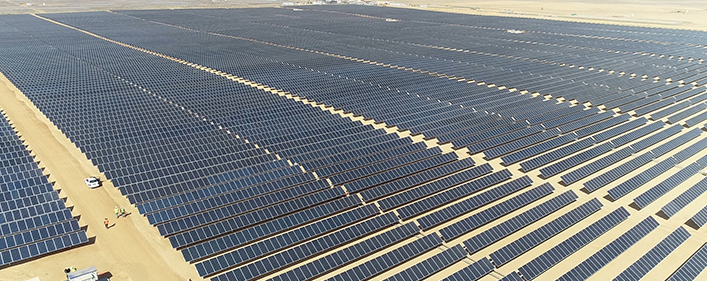Greece’s minister of the environment and energy Kostas Skrekas and Egypt’s minister of electricity and renewable energy Mohamed Shaker El-Markabi yesterday signed an MoU aiming to link the two countries’ electricity systems via a new subsea power line.
The signing in Greece’s capital city Athens comes just a few months after Greece, Cyprus, and Israel joined forces to connect their power grids via the so-called EuroAsia Interconnector.
Both electricity interconnections could provide the European Union block with access to solar power generated in the sunny regions of the Middle East and Northern Africa (MENA).
Why it matters for Greece
Greece’s prime minister Kyriakos Mitsotakis tweeted about the project, stating that it “secures the flow of green energy and enhances Europe’s energy security.”
The Greek ministry’s press release goes a step further adding that electricity imports from Egypt would spark competition in the Greek market, while access to Egyptian electricity loads would mean less need to run fossil fuel plants in Greece.
Both developments, argues the Greek ministry, would reduce electricity prices, and allow Greece to focus on renewable power, which is cheaper to run than fossil power plants.
The Greek government has set a policy to phase coal out by 2028, although this time window has now been reduced to 2025. Furthermore, according to the country’s national energy plan, renewable energies will provide 61% of Greece’s electricity by 2030. Ministry sources have told pv magazine this figure is also set to increase.
This means Greece needs both energy storage facilities and new interconnections with neighboring countries.
Popular content
Why it matters for Egypt
On the contrary, Egypt is far from decarbonizing its electricity system, which predominantly runs on gas and oil power plants. Indeed, of the country’s 193.55 TWh of electricity generation in 2019, solar and wind power accounted for just 3.68 TWh and 2.79 TWh respectively, while gas provided a staggering 149.75 TWh.
Nevertheless, Egypt’s 2035 Integrated Sustainable Energy Strategy emphasizes the need to turn to renewable energies. Specifically, the country aims to increase the supply of electricity generated from renewable sources to 20% by 2022 and 42% by 2035, with solar PV accounting for 22%, wind 14%, concentrating solar power (CSP) 3%, and hydro power 2%, by that time.
Egypt’s solar PV powerhouse is the so-called Benban complex in Aswan province, Southern Egypt. The complex comprises 39 PV installations totaling 1.86 GW of capacity. Around 1.5 GW of it is currently operational.
The country has an immense solar power resource with 2,000 to 3,000 kWh/m2 per year of direct solar radiation. The sun shines 9-11 hours a day from north to south, with just a few cloudy days. However, in 2015 Egypt also discovered the Zohr gas field, which it claims is the largest in the Mediterranean region.
Questions
The emerging questions are: Will Egypt develop its green energies sector or focus on gas? And whatever Egypt’s politicians decide, will they transport energy in Europe or use it at home to satisfy their booming demand?
The answer to these is going to be dictated by economics alone, mainly by the price of electricity in Egypt and abroad, as well as the price of developing and running power stations.
One might only hope that politicians will also think of climate change. The United Nations COP is set to start in Glasgow, Scotland in a few days and politicians will talk their usual talk; but more than even action is needed too.
This content is protected by copyright and may not be reused. If you want to cooperate with us and would like to reuse some of our content, please contact: editors@pv-magazine.com.


The power link, if built, could provide a route for African solar energy to reach European markets.
Incredible .. when compared to the Strait of Gibraltar only 10 miles/ 17 km to cross ..
No wonder they say that politicians can’t count ..